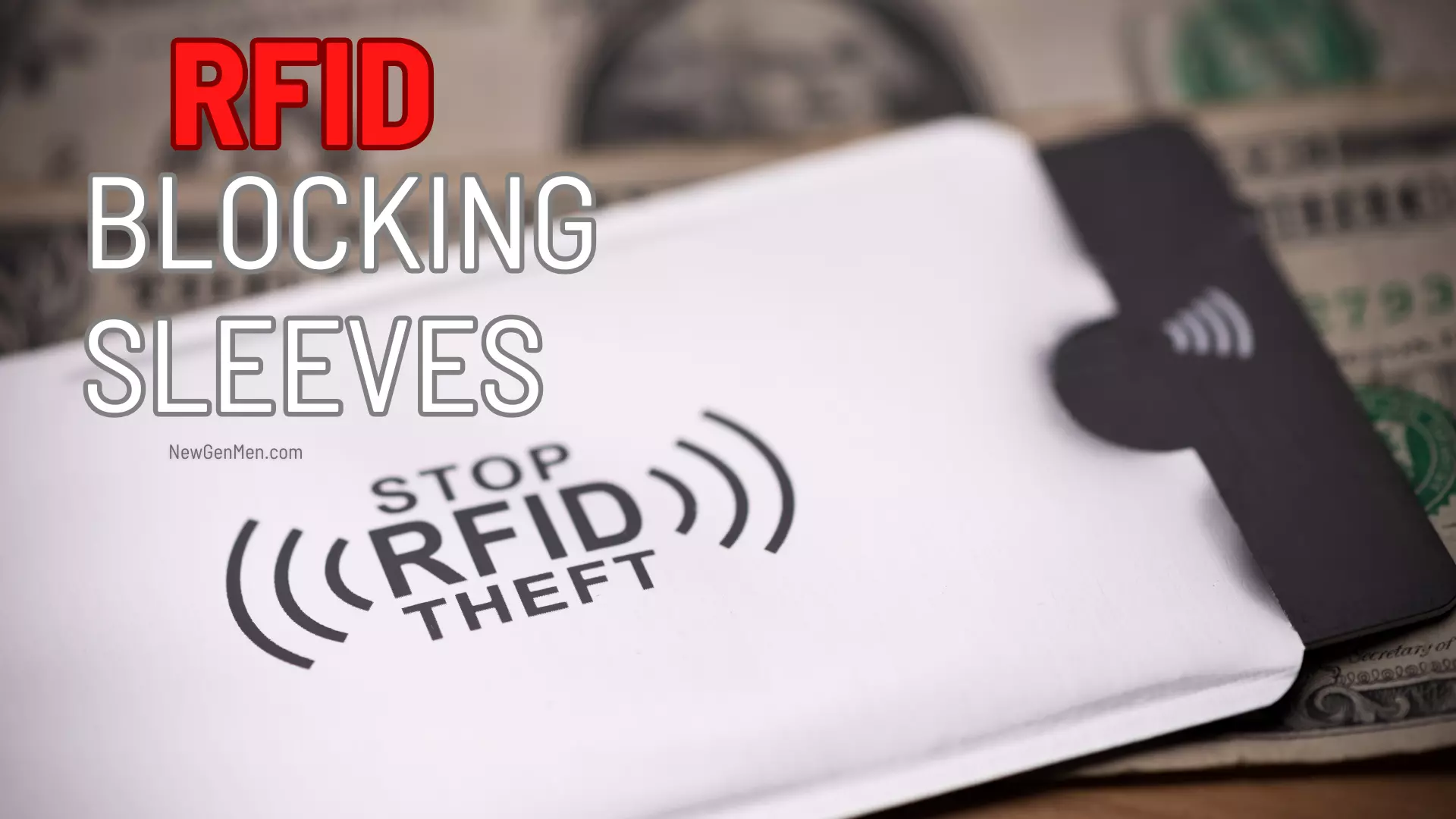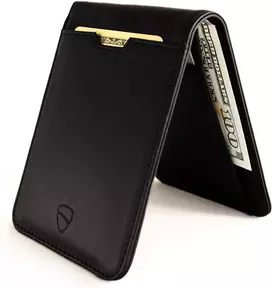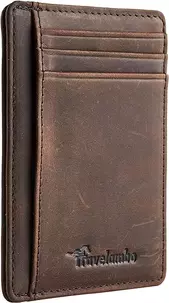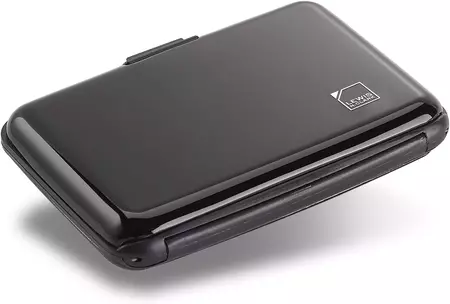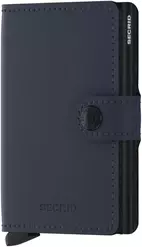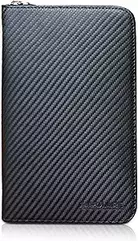Digital crimes are on the rise. Protect yourself from lurking thieves with RFID blocking sleeves for your wallet.
Picture this completely common scenario: you’re sipping your coffee at a crowded cafe, completely unaware that a nearby cyber-criminal is scanning your cards using a concealed skimming device. These devices can easily capture your card information through wallets, purses, or backpacks, leaving you with an emptied bank account and a sense of violation.

In the modern age of technology, convenience often comes hand in hand with vulnerability. Our wallets, once home to a simple stash of cash and cards, have evolved into digital repositories of sensitive information. One way you can protect your assets is with RFID block sleeves. Imagine a cloak of invisibility for your credit cards. That’s essentially what RFID blocking sleeves are – tiny sheaths of security designed to protect your contactless cards from remote theft.
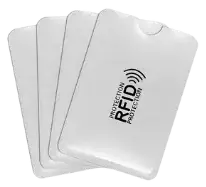
RFID, or Radio Frequency Identification, is the technology behind those tap-and-go credit cards that make transactions lightning fast. However, this convenience comes with a downside. Criminals equipped with RFID skimming devices can remotely extract information from a banking card or key fob without your knowledge, leading to unauthorized transactions and theft.
How Does a RFID Skimmer Work?
An RFID card skimmer works by detecting the presence of an RFID card or key fob nearby, initiating scanning as the victim approaches with their RFID-enabled card. These cards communicate wirelessly via radio frequency signals due to a built-in chip and antenna. When within the range of an RFID reader, the card responds to emitted radio signals, transmitting stored data.
The skimmer, posing as a legitimate RFID reader like those at payment terminals, intercepts these signals and captures them via its antenna. The stolen data is then stored by the skimmer. Subsequently, criminals can exploit this information for unauthorized purchases or even duplicate the victim’s card onto a blank RFID card or duplicate key fob, allowing theft without the owner realizing anything is missing.
How Do RFID Blocking Sleeves Work?
At its core, RFID blocking sleeves are a barrier made of special materials that obstruct the radio frequencies used by RFID technology. These materials typically consist of a combination of metals – aluminum, copper, and nickel – woven into a fabric or film.
When your card is safely nestled inside the sleeve, these metals create a Faraday cage, a term derived from the legendary scientist Michael Faraday. This cage acts as a shield, preventing electromagnetic fields from reaching your card and thus safeguarding your data from prying digital hands.
Tests have revealed that while RFID blocking sleeves and other shielding devices aren’t entirely foolproof, they do significantly decrease the maximum distance for readability, reducing it from roughly 1.5 feet (50 cm) to 1–2 inches (3–5 cm).
Best RFID Blocking Sleeves – Top Picks
Vaultskin MANHATTAN Slim Bifold Wallet
This sleek wallet doesn’t just exude style but also boasts advanced RFID blocking technology. With its genuine top-grain Italian leather exterior, it’s as fashionable as it is functional. The bifold design offers ample space for cards and cash, while its RFID shield keeps your data secure.
Travelambo Front Pocket Minimalist Leather Slim Wallet
For those seeking simplicity without compromising on protection, this RFID blocking sleeve wallet is a front-runner. Crafted from premium leather, it has a slim design that’s convenient to carry around in your front or back pocket without taking up space. The RFID-blocking layer ensures that your cards remain impenetrable to tech-savvy thieves.
Lewis N. Clark RFID Blocking Aluminum Wallet
This sleek, aluminum wallet is designed with the modern man in mind. The hard shell with a durable ABS plastic insert ID and accordion sleeves fits in your front pocket, carry on, or bag while keeping your cards uncrushed and safe. It has a clasp closure and provides blocking protection from all RFID scanners and readers.
SECRID Slim Wallet
The SECRID Slim Wallet looks simple, compact, and unassuming, but packs a punch when it comes to protecting your cards. Made of genuine leather, it also features a unique mechanism that clips in and pops out your cards for security and convenience. The aluminum casing provides top-notch RFID protection and durability, guaranteeing over two years of use.
Polare Full Grain Leather Travel Wallet And Passport Holder
Catering to the jet-setting crowd, this full grain leather wallet offers RFID shielding not just for your cards, but also your passport. Along with a premium soft and luxurious texture, this high quality bifold wallet can perfectly block unwanted RFID scanners and keep chip cards and other personal and financial information safe from unauthorized scans.
Related: Old Money Style Men’s Styling Tips: The Essentials
DIY RFID Blocking Sleeve
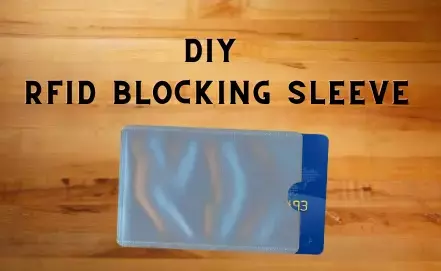
Aside from wrapping your cards or key fob with tinfoil while out, there are easy and cheap ways to create your own DIY RFID blocking sleeve at home. You’ll most likely have all the materials laying around anyway.
Materials Needed:
- Aluminum foil or RFID blocking fabric
- Clear packing tape or fabric glue
- Scissors or cutting tools
- Ruler or measuring tape
- Contactless card or device you want to protect (for sizing)
Steps:
- Measure and Cut: Start by measuring the dimensions of the card or device you want to protect. Add about 1/2 inch (1.27 cm) to each side for seam allowance and ease of insertion.
- Cut the RFID Blocking Material: Use the measurements from step 1 to cut out two pieces of aluminum foil or RFID blocking fabric. These pieces will serve as the front and back panels of your sleeve.
- Prepare the Panels: Lay one panel flat on a surface, with the RFID-blocking side facing up. Place the contactless card on it to make sure it fits comfortably within the dimensions. If using aluminum foil, ensure that the reflective side is facing the card.
- Attach the Panels: Apply a thin, even layer of clear packing tape or fabric glue along the edges of the panel that will form the sides and bottom of the sleeve. Make sure to leave the top edge open for inserting the card.
- Seal the Sleeve: Place the second panel on top of the first panel, matching up the edges. Press down firmly to seal the sides and bottom of the sleeve. If using tape, make sure the tape adheres securely. If using fabric glue, allow the glue to dry completely for a day or two.
- Insert and Protect: Open the top edge of the sleeve and slide your contactless card or device inside. Ensure that the card is fully enclosed within the sleeve and that the top edge is securely closed.
- Test the Sleeve: Before using the sleeve, test its effectiveness with an RFID reader or you can try putting your key fob into it and see if you’re able to unlock your car through the sleeve. If it does not work, your homemade RFID blocking sleeve works successfully. If large enough, you can also try putting your cell phone into the sleeve and calling it. It should not be able to receive any service if your sleeve was made correctly.
Also Read:

